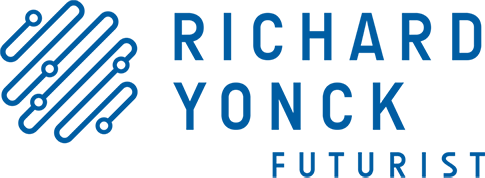The Intelligence Revolution (Part 1)
In the intelligent future, positions, roles, entire fields will disappear from the jobs market. In many cases, the tasks themselves will still exist but increasingly they’ll be done by evermore intelligent technologies instead of by humans. As in the past, these changes will be motivated by market forces and the ongoing incentive to improve efficiency and productivity. And like the Digital Revolution and the Industrial Revolution before it, the Intelligence Revolution will transform the jobs landscape for still another reason. Because it will lead to increasingly rapid innovation and product creation.
In the past, machines have eliminated jobs because they could be designed to be faster, stronger and more tireless than their flesh and blood counterparts. During the Industrial Revolution, this meant lower skilled, often highly-repetitive labor was displaced. Spinning, weaving and sewing machines transformed the work environment. Vast numbers of trades people saw their work taken away by what would eventually become a worldwide clothing industry. Which would itself one day create millions of jobs. Likewise, unskilled manual labor. Before the beginning of the Industrial Revolution, roads and railways were built on the backs of thousands of workers. Today with the aid of machines, dozens can do the work previously performed by hundreds, if not thousands. These technologies (along with many others that came after them) built the cities, highways and factories that led to still more jobs.
The Digital Revolution had similar impacts. Office functions have seen such increases in efficiency that a single person can perform the work once performed by many. At the same time, that worker has seen a huge increase in available skills and technologies. These changes also took away a lot of jobs but led to the creation of many new ones as well. Desktop publishing, digital photography and digital video production utterly transformed their fields. At the same time these new technologies eliminated jobs, they put the ability to create mass media into the hands of an unprecedented number of people.

But I suspect these examples will pale beside the changes that will be brought about by the Intelligence Revolution. Two fields that are poised to transform entire industries are those of automated invention and rapid prototyping. Using techniques such as genetic programming (algorithms that utilize fitness selection), computers are increasingly able to invent devices that are far more efficient than anything that could be created by a person. For instance, Evolutionary Antenna Synthesis is leading to better, more cost-effectively designed antennas. In another field, evolvable hardware has improved microprocessor design, creating circuits that are far denser, increasingly complex and fault-tolerant than anything that could be created by a team of unaided humans.
As they develop, 3-D printer rapid-prototyping technologies will allow us to implement these inventions and designs far faster than we ever could before. The creation of open source rapid-prototypers, such as the RepRap and MakerBot projects, will make these technologies widely available, leading to a democratization of this process as well. 3-D designs for these machines are already widely shared and distributed via the internet and the concept will likely lead to downward price pressure as these technologies become increasingly sophisticated.
All of this is leading to a sea change for job markets and how we approach our careers and education. As always, such change will have consequences both good and bad. I’ll elaborate on this further in Part 2 of this series.
